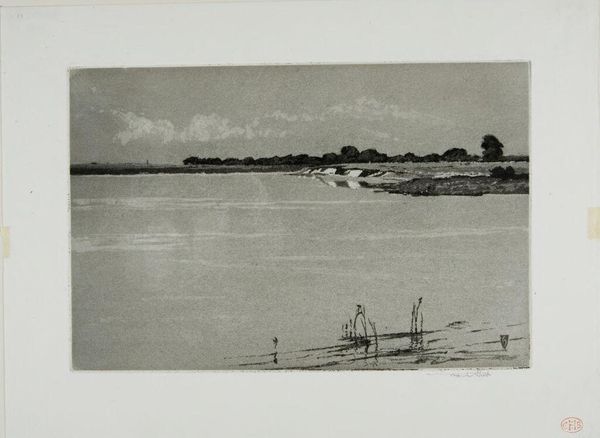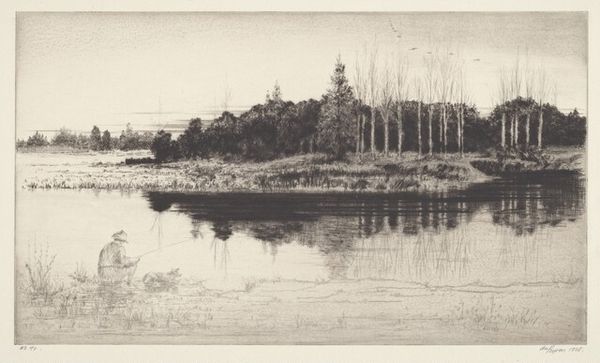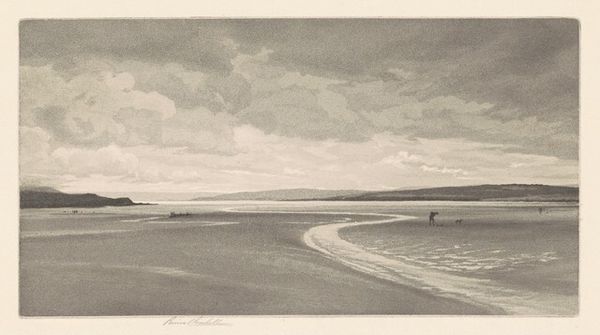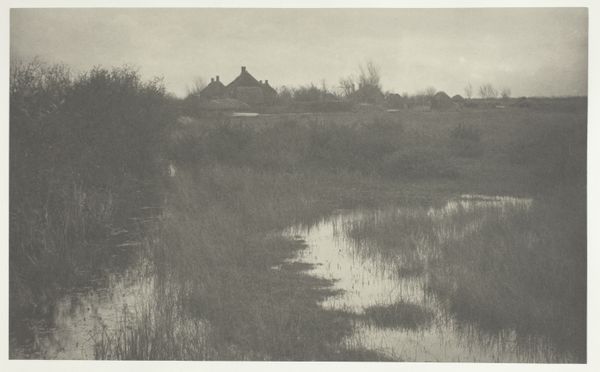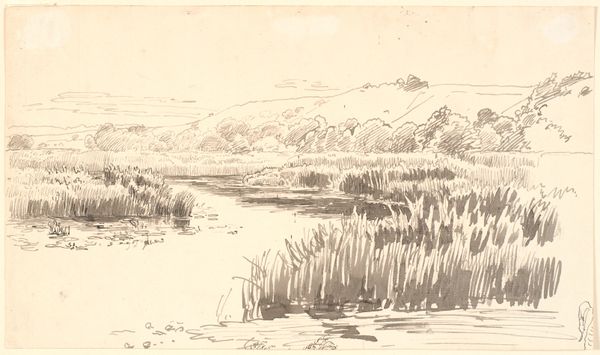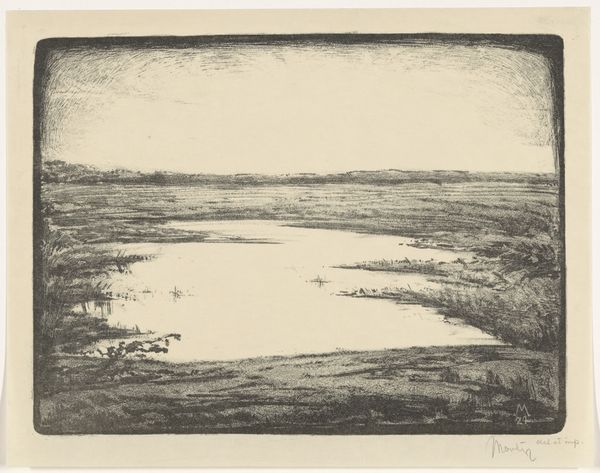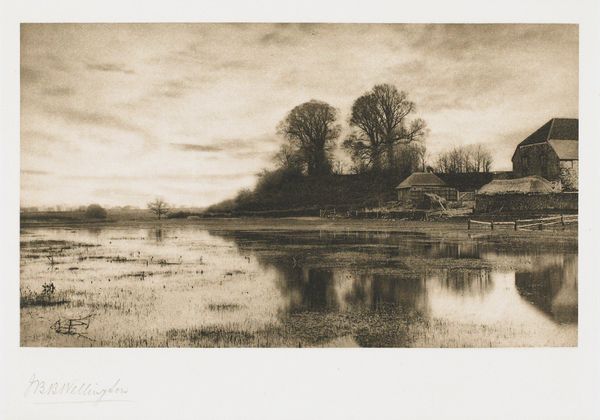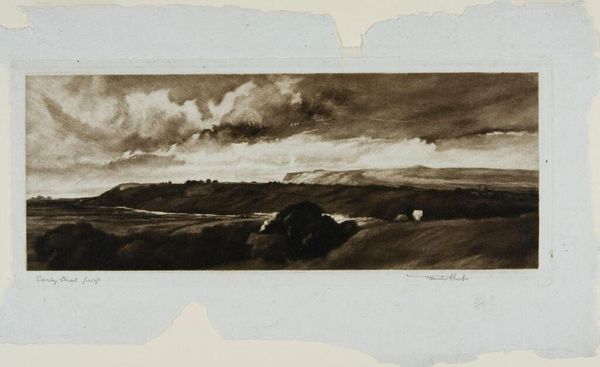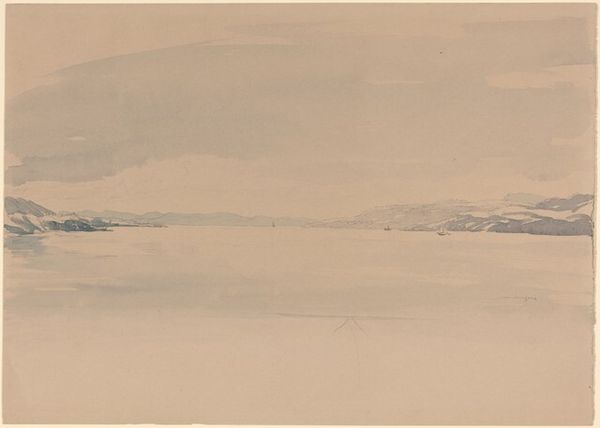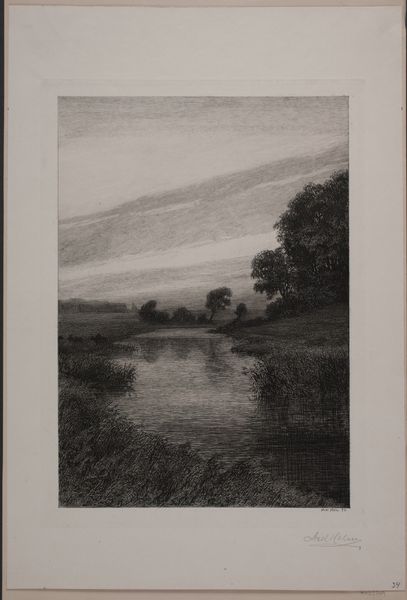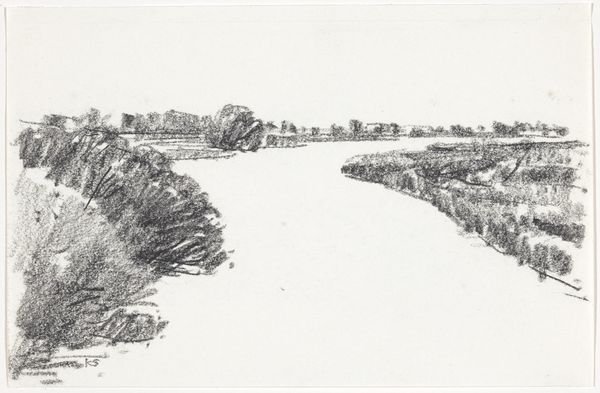
drawing, print, pencil
#
drawing
# print
#
landscape
#
pencil
#
surrealism
#
realism
Dimensions: image: 26.35 × 40.16 cm (10 3/8 × 15 13/16 in.) sheet: 32.7 × 46.67 cm (12 7/8 × 18 3/8 in.)
Copyright: National Gallery of Art: CC0 1.0
Editor: Stow Wengenroth's "Lonely River," a print from 1953, offers a beautifully detailed landscape. The scene feels so still and almost dreamlike to me. What strikes you most about this piece? Curator: What I find compelling is how this seemingly simple landscape participates in the tradition of American landscape painting, yet departs from it. The title itself, "Lonely River," signals a shift. Unlike the expansive vistas of the Hudson River School celebrating Manifest Destiny, Wengenroth offers a more intimate, even melancholic view of nature. It mirrors a postwar sentiment, perhaps a turning away from grand narratives. Does the level of detail alter how we relate to landscape painting conventions? Editor: That's fascinating. I hadn’t considered the historical context beyond the aesthetic beauty. So, the "loneliness" hints at a broader societal feeling? Curator: Exactly. The piece presents a distilled image of nature. The careful rendering of light and shadow, alongside its almost photographic precision, evokes both realism and something bordering on the surreal. We need to consider Wengenroth's artistic choices – like limiting the palette and embracing the print medium. These were all decisions that affected how people experienced American landscapes, often flattening nature in a time where they yearned for the real. Editor: I see. By using printmaking and focusing on detail, Wengenroth offers a different experience from grand landscape painting, prompting contemplation, maybe even sadness? Curator: Precisely. It encourages reflection on our relationship with the land and questions celebratory historical interpretations. It's an image for a changed America, looking for new ways to see itself. Editor: Thanks. I see so many layers here that I hadn’t noticed before. Curator: Landscape painting becomes much more potent when situated within broader historical currents. I think that you are going to look at landscape in art differently from now on.
Comments
No comments
Be the first to comment and join the conversation on the ultimate creative platform.
